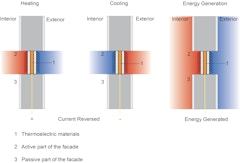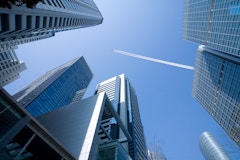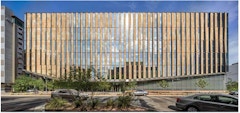
477 results
-
 Mid-century through 1980’s buildings with lock-strip or “zipper-gasket” glazing systems are an ever present part of the urban landscape in many…
Mid-century through 1980’s buildings with lock-strip or “zipper-gasket” glazing systems are an ever present part of the urban landscape in many… -

The Seismic Capability of Curtainwalls
- Paper by Peter Lalas MIEAust CPEng NER APEC Engineer IntPE(Aus)
The testing of aluminum/glass curtainwalls for seismic capability, mainly inter-story drift, has been carried out on many curtainwalls over the last
-

Building Buildings, Community, and Wellbeing
- Article by Brienna Rust
This month, our content is focused on how buildings impact people and their well-being. How does their shape, look, and design impact how we function? How are our daily lives, our culture, and our society influenced by the built environment around us?
-

Facade with Innovation
- Paper by YU Hui, Director JIN Shihui, Project Manager
Shanshui City and Star Bund Center can be considered as representative projects of RFR Shanghai recently Both provide creative solutions for complex… -

Preserving a Historic Facade
- Paper by Maria Mohammed, S.E. · John Fidler, RIBA, Intl Assoc AIA, FRICS, FSA, FRSA, FIIC, FAPT
Environmental and socio-economic benefits of sustainable preservation have become apparent most recently in the restoration of the historic former
-

Event Passed
2023 Vitruvian Honors & Awards Ceremony
- New York, United States
World Congress by Facade Tectonics Institute, Inc.
-

Ginza Six
- Paper by Katsuhiko Muramoto, Associate Professor of Architecture Junko Owada, Architect at Asahi Building Wall Company, Tokyo
Tokyo’s prestigious Ginza District, is home to innovative architectural design. One of the most recent examples is Ginza Six (GSIX), the largest… -

Carbon crisis: The embodied carbon challenge
- Article by Andrew Himes
The focus of this issue of SKINS is on embodied carbon -- the carbon dioxide (CO₂) emissions associated with materials and construction processes throughout the whole lifecycle of a building or infrastructure.
-

Facade Tectonics Forum: MINNEAPOLIS
- Event by Facade Tectonics Institute
FTI touched down in Minneapolis to confront themes central to the ever-evolving facade: energy-efficiency and sustainability, digital technology, kinetic and dynamic components, and material evolution.
-

Impact Of Thermal Bridges On The Energy Response Of A Building
- Paper by Ilaria Sebastiani · Riccardo Pinotti · Stefano Avesani · Simone D’Amore · Stefano Pampanin
The European building stock is mainly constituted by highly energy demanding buildings. The only way to a more sustainable and decarbonized building
-

Event Passed
FTI LA-hub: CircuClarity!
Our upcoming FTI Student Forum explores the intersection of Facades, Carbon, and Circularity. In a fast paced spitfire format, architecture students present their recent work and research.
Forum by Facade Tectonics Institute, Inc.
-

Novel Active Facade Systems and Their Energy Performance in Commercial Buildings
- Paper by Ajla Aksamija · Mahsa Farid Mohajer · Zlatan Aksamija
This article presents results of a research study that focuses on understanding energy performance of novel facade systems that integrate
-
The Vertical Campus Facade
- Paper by Mayine Yu, AIA · Cooper Schilling, AIA, LEED AP BD+C · Jessica Young, RA
Case study of the recently opened John A. Paulson Center for New York University in Manhattan reviews design solutions of façade depth and scale to
-

Build Test Iterate Repeat
- Paper by Elizabeth L McCormick, RA, CPHC, LEED AP, Assistant Professor
The global increase in atmospheric temperature rise combined with the rapid growth of previously underdeveloped climate zones presents a growing need… -
Unitized Curtain Wall
- Paper by Brian Masuda · Kathleen Kulpa · Margaret Tyrpa
Unitized curtain wall has become ubiquitous in contemporary facade design and construction due to advantages associated with speed of erection, lower
-

Curb Your Carbon, Knave!
- Article by Mic Patterson, PhD LEED AP+
A question for architects and building industry: Can our cities be part of the solution to the challenges facing humanity, or are they intrinsically and inevitably a big part of the problem? To move beyond the latter demands nothing less than a fundamental shift in the way we think about buildings.
-

Reduce, Reuse, Reclad
- Paper by Daniel Nauman, AIA, NCARB, LEED AP, Senior Associate Jessica Santonastaso, Associate Jennifer Sze, RA, USGBC LEED AP, Principal and Director of Special Inspections
Kintsukuroi, the Japanese art of repairing broken pottery with powdered precious metal, is a practice of celebrating the life and history of an… -

Edge Lighting Glazing with Hidden Fixtures
- Paper by Dave McCarroll, Dan Weinreber, Lei Fu,
Dynamic architectural lighting in urban areas is a key element in creating attractive nighttime icons in addition to potentially generating… -

Emulating Nature's Structured Randomness in Facade Design
- Paper by Ned S. Kirschbaum FAIA, CCCA, LEED AP BD+C,
The wonder of nature is the abundance of unique forms she creates based on a few simple physical principles or laws. No two snowflakes are alike.… -

Integration of Structural Glass in Historic Religious Buildings
- Article by Karine Charlebois, Associate
St. Patrick’s Cathedral’s Lady Chapel glass wall and the Trinity Church glazed canopy demonstrate that structural glass can be a great solution to improve the functionality of a historic building without competing with its original fabric.
